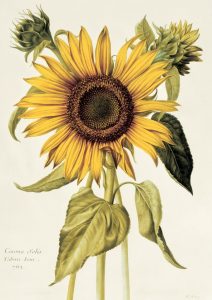 The Hand-Colouring of Natural History Illustrations in Europe, 1600–1850.
The Hand-Colouring of Natural History Illustrations in Europe, 1600–1850.
Organisers: Dr. Joyce Dixon and Dr. Giulia Simonini;
Keynote speaker: Dr. Alexandra Loske.
From the first instances of coloured engravings depicting botanical and zoological subjects, the usefulness and effectiveness of the printed image was transformed. In the seventeenth century the practice of hand-painting prints in watercolour was pioneered in luxurious and costly works such as Basilius Besler’s Hortus Eytettensis (1613). A century later this technique allowed for the publication of Maria Sibylla Merian’s exquisite Metamorphosis Insectorum Surinamensium (1705), and the first British collection of hand-coloured zoological engravings, A Natural History of English Insects (1714–1720) by Eleazar Albin. Colour, pictorially represented, had become crucial to the project of natural knowledge-making: as Mark Catesby commented in 1731, “a clearer Idea may be conceiv’d from the Figures of Animals and Plants in their proper Colours, than from the most exact Description without them”.
The proliferation of hand-coloured impressions continued into the nineteenth century and yielded a highly-productive cottage industry. Even with the advent of colour printing, chromatic details of biological subjects were usually finished by hand (Friedman, 1978). Yet despite their vital role in the formation and dissemination of natural knowledge, the activities of hand-colourers – known also as “colourists”, “afzetters” (in Dutch) and “illuminist” (in German) – remain poorly understood (Jackson, 2011; Oltrogge 2000). This workshop aims to shed light on this vital aspect of European image-making, and hopes to attract researchers investigating diverse areas of natural history. We welcome contributions on the following themes and topics:
– Materiality: paints and pigments; colouring techniques; equipment
– Semantics: methods of image replication; proofing processes; modes of pictorial translation
– Economy: working conditions and wages; guilds; case studies of individual enterprises
– Afterlife: consumption and circulation; amateur colourers; reception and significance
The workshop will take place at the University of Konstanz on Thursday–Friday, 26–27 February 2025. We are accepting proposals for 20-minute papers in English. Please send your title, a 200-word abstract and a short biography (150 words) to Joyce Dixon (joyce.dixon@ed.ac.uk) and Giulia Simonini (giulia.simonini@tu-berlin.de) by Friday 21 June 2024.
Papers can be given in person or virtually. Please indicate your preferred method of delivery when submitting your abstract.

Leave a Reply
You must be logged in to post a comment.